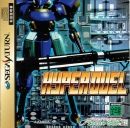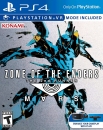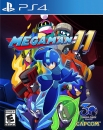Overworlds and underworlds. Outside and inside. Open worlds need a good balance of these two things. If an open world doesn't have that, they tend to suck.
By overworld, I mean a large area(s) that can contain dungeons, towns, buildings, and other interiors.
By underworld, I mean more linear maps within the overworld, typically accessible by a choke points like a door or a open entrance. Dungeons and buildings would be considered part of the underworld in my definition.
Some buildings are dungeons. Most caves are dungeons, though some small caves effectively work the same way a building works. Dungeons are defined by how they function. If an underworld area is designed primarily to be challenging to traverse in some way (combat/layout/puzzles/etc), then it's a dungeon. If an underworld area is designed exclusively to provide a practical function to the player, it's not one.
I think every open world game needs a good balance of both to be good. The critical flaw I see in bad open world games is focusing too much on the overworld and not enough on the underworld. If an open world game has a good overworld and a good underworld, it's always going to be a great game. If it has an amazing overworld and a terrible underworld, it's almost always going to suck.
I've never played shadow of the collossus, but if it's good, it feels like that's the only open world game I've ever seen that seems good despite not having a good underworld balance, so this may not be an absolute rule, but that game is designed in such a specific way it doesn't even need to have a good overworld. I've seen it called a boss rush game, so the overworld feels like it has a function very different to most other open world overworlds, and I can imagine a better underworld balance would mess up that function in a way that would ruin what that game is trying to do.
Zelda games are so good because they strike this balance consistently. If you don't like botw's open world, it's probably because you think it messes up this balance. If you don't like totk's, same reason. When people say there aren't "things to do" in an open world game, I think what they really mean is that the underworld sucks, because there's typically a lot of overworld things to do in these kinds of open world games. Tasks and stuff. Pokemon Scarlet and Violet has a really bad overworld/underworld balance. It's overworld is actually pretty good, but it's underworld isn't very good, and it's not well balanced with the overworld. If SV had a good balance, half of your memory of those games would be exploring inside places, like it is in older pokemon games. Ubisoft's open worlds tend to have this bad balance as well. I could go on.
What they all typically lack are enough good, intentionally-designed underworlds to access within the overworlds, 99% of the time in the form of dungeons. For towns, that's mostly buildings where you can rest, gain lore, world build, progress the plot, and shop for items. For the rest of the overworlds, that's just dungeons in the forms of caves, cave dungeons, buildings that are dungeons, etc.



























































